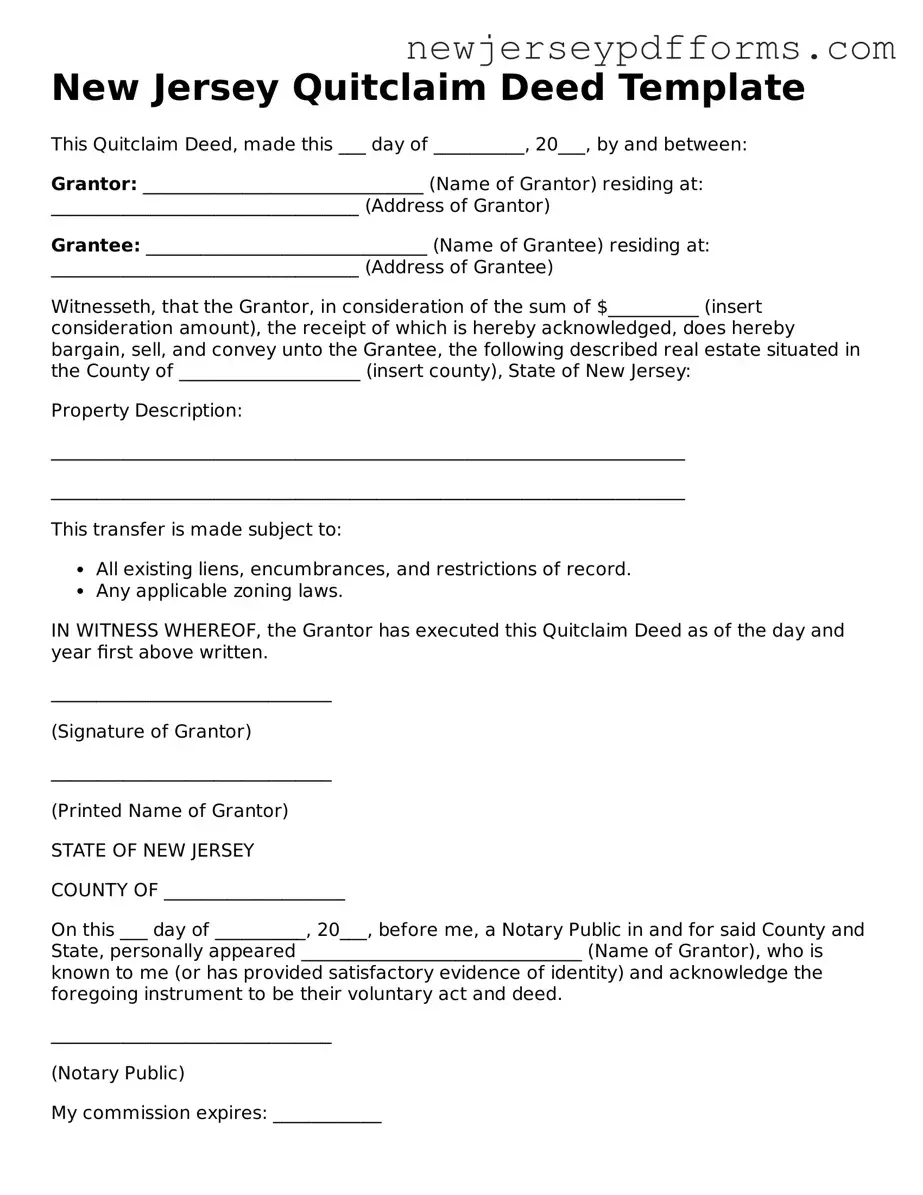A warranty deed is a document that guarantees a clear title to the property being transferred. Unlike a quitclaim deed, which offers no such guarantees, a warranty deed provides assurances that the grantor holds the title free from any claims or encumbrances. This type of deed is often used in transactions where the buyer seeks protection against potential disputes over property ownership. The inclusion of warranties makes it a more secure option for buyers, as it offers legal recourse if issues arise after the transfer.
A bargain and sale deed is similar to a quitclaim deed in that it conveys property rights from the seller to the buyer. However, it implies that the seller has ownership and the right to sell the property, but it does not provide any warranties against claims. This type of deed is often used in real estate transactions where the seller is not willing to provide a warranty but still wishes to transfer ownership. Buyers should be aware that while they gain title, they may not have full protection against future claims.
A special warranty deed is another type of deed that shares similarities with a quitclaim deed. This document guarantees that the grantor has not encumbered the property during their ownership but does not protect against claims that arose before the grantor acquired the title. Buyers receive some assurance regarding the period of the grantor's ownership, making this deed a middle ground between a warranty deed and a quitclaim deed. It provides limited protection, which may be suitable for certain transactions.
A deed of trust is a legal document used in real estate transactions, particularly in financing. While it serves a different purpose than a quitclaim deed, it involves the transfer of property rights. In a deed of trust, the property is transferred to a trustee, who holds it as security for a loan. If the borrower defaults, the trustee has the authority to sell the property. This document is essential in securing loans, while a quitclaim deed is focused solely on transferring ownership without any financial implications.
An easement deed allows one party to use a portion of another party's property for a specific purpose. While it does not transfer ownership like a quitclaim deed, it is similar in that it conveys rights associated with property. Easements can be permanent or temporary and may involve access to land for utilities, roads, or other uses. Understanding the nuances of easement deeds is crucial for property owners, as they can affect property value and usage rights.
A lease agreement, while primarily a contract, shares some characteristics with a quitclaim deed in that it involves the transfer of rights. A lease allows a tenant to use a property owned by another party for a specified period in exchange for rent. Unlike a quitclaim deed, a lease does not transfer ownership but grants temporary rights to the tenant. Both documents require clear terms to avoid disputes, highlighting the importance of precise language in property-related agreements.
An affidavit of title is a sworn statement made by a seller regarding the status of the property title. While it does not transfer ownership like a quitclaim deed, it serves to clarify the seller's claims about the property. This document can be used in conjunction with other deeds to provide additional assurance to buyers. It can help identify potential issues with the title before the transfer occurs, thereby reducing the risk of disputes.
A transfer on death deed allows an individual to transfer property to a beneficiary upon their death without going through probate. While it does not resemble a quitclaim deed in the immediate transfer of ownership, it shares the purpose of facilitating property transfers. This type of deed provides a simple way to pass on property while retaining ownership during the grantor's lifetime, making it an effective estate planning tool.
